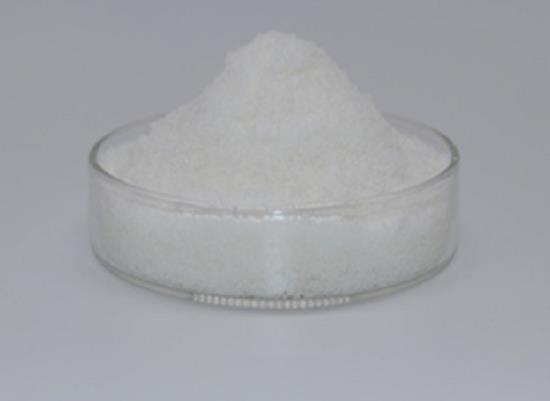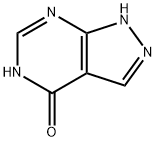Allopurinol: mechanism of action and clinical efficacy
Jun 20,2023
General Description
Allopurinol is a medication commonly used to treat gout, which is a form of arthritis. This drug works by lowering levels of uric acid in the body, which can cause painful inflammation in joints. However, recent studies have shown that Allopurinol may be beneficial for other health conditions as well. For example, it may help slow the progression of chronic kidney disease and reduce the risk of cardiovascular events. In addition, Allopurinol has been investigated as a potential treatment for chronic prostatitis, a condition that causes inflammation of the prostate gland. One study found that Allopurinol significantly improved symptoms and reduced inflammation in men with this condition. While further research is needed to fully understand the potential benefits of Allopurinol for these conditions, it is clear that this drug has the potential to improve quality of life for many people. If you are experiencing symptoms related to gout, chronic kidney disease, cardiovascular disease, or chronic prostatitis, talk to your healthcare provider about whether Allopurinol may be right for you.
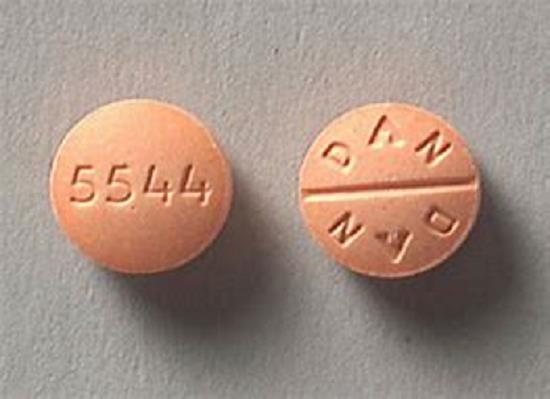
Figure 1. Tablets of allopurinol
![]()
![]() Mechanism of action
Mechanism of action
Allopurinol is a medication that inhibits the xanthine oxidase-mediated conversion of hypoxanthine to xanthine and xanthine to uric acid by competitively binding to xanthine oxidase. This results in increased concentrations of hypoxanthine and xanthine in urine and plasma and decreased concentrations of uric acid in plasma. Allopurinol also reduces de novo purine biosynthesis by inhibiting amidophosphoribosyl transferase, the rate-limiting enzyme of purine biosynthesis, through feedback inhibition. Additionally, amidophosphoribosyl transferase activity is reduced by depletion of the substrate phosphoribosylpyrophosphate occurring as a result of conversion by the 'purine salvage pathway'. The total purine excretion is reduced by up to 60% in 'normal' subjects taking allopurinol, but not in subjects with congenital hypoxanthine-guanine phosphoribosyltransferase deficiency. 1
![]() Clinical efficacy
Clinical efficacy
Gout
Allopurinol is the most commonly used urate-lowering therapy for treating gout. However, optimal dosing of allopurinol in gout patients with chronic kidney disease remains a topic of ongoing debate despite being available for over 40 years. Clinicians must be aware of the relationship between serum urate and kidney function, as well as the effects of allopurinol on kidney function and vice versa, particularly for gout patients with renal impairment. The use of allopurinol in dialysis patients is an area that is not well studied, and careful consideration of dosage and timing of administration in relation to dialysis is necessary due to reduced plasma oxypurinol concentrations. Recently, allopurinol has been suggested for treatment in non-gouty chronic kidney disease patients. Observational studies have found an association between serum urate and chronic kidney disease and end-stage renal failure. Several small studies have examined the effect of urate-lowering therapy with allopurinol on the progression of kidney disease with varying results. However, larger clinical trials are currently underway. Despite ongoing debate regarding optimal dosing, allopurinol remains a valuable urate-lowering therapy for gout patients, and its potential role in the treatment of non-gouty chronic kidney disease warrants further investigation. 2
Cardiovascular disease
Cardiovascular disease is the leading cause of death, and studies have shown that elevated uric acid levels are directly related to an increased risk of cardiovascular events. Thus, there has been interest in investigating uric acid-lowering drugs for the treatment of cardiovascular disease. While allopurinol is traditionally used as the cornerstone therapy for gout, its ability to inhibit xanthine oxidase (an enzyme necessary for uric acid formation) has prompted research evaluating allopurinol as a cardiovascular medication. Studies have shown that the free radicals and superoxides formed during xanthine oxidase activity contribute to worsening prognosis and increased cardiovascular events, as well as coronary endothelial dysfunction and oxidative stress on myocardial tissue. By both preventing uric acid formation and acting as a free radical scavenger, allopurinol has the potential to improve these conditions. Clinical trials have demonstrated that allopurinol can improve endothelial dysfunction and exercise capacity in patients with angina pectoris, while decreasing oxidative stress and improving mechanoenergetic uncoupling in congestive heart failure patients. Furthermore, allopurinol may enhance myocardial contractility and improve the left ventricular ejection fraction. 3
Chronic prostatitis
Allopurinol is a medication that has been investigated for the treatment of chronic prostatitis. One novel theory suggests that urinary reflux into prostatic ducts causes prostatic inflammation via high concentrations of purine and pyrimidine base-containing metabolites in prostatic secretions. Therefore, allopurinol, which lowers prostatic levels of uric acid, has been studied as a treatment for chronic prostatitis. One randomized trial involving 54 men lasting 240 days found significant improvements in patient-reported symptoms, investigator-graded prostate pain, and biochemical parameters in the allopurinol group compared to the placebo group. 4
Reference
1. Murrell GA, Rapeport WG. Clinical pharmacokinetics of allopurinol. Clin Pharmacokinet, 1986, 11(5):343-353.
2. Stamp LK, Chapman PT, Palmer SC. Allopurinol and kidney function: An update. Joint Bone Spine, 2016, 83(1):19-24.
3. Kelkar A, Kuo A, Frishman WH. Allopurinol as a cardiovascular drug. Cardiol Rev, 2011, 19(6):265-271.
4. McNaughton CO, Wilt T. Allopurinol for chronic prostatitis. Cochrane Database Syst Rev, 2002, 4:CD001041.
- Related articles
- Related Qustion
- Allopurinol: A Comprehensive Overview for Chemistry Professionals May 14, 2024
Allopurinol is a medication commonly used in the treatment of gout and certain types of kidney stones.
- Allopurinol: the treatment of elevated uric acid levels Jan 2, 2024
Allopurinol, a key gout treatment, inhibits uric acid, explored for cardiovascular benefits, with optimized safety in synthesis.
- Allopurinol - Reaction / Application on synthetic works Nov 19, 2019
Allopurinol is xanthine oxidase-activated prodrug of thymidine phosphorylase inhibitor. It is also an important organic intermediate to synthetize substituted pyrimidine products.
1,3-Propane sultone is a chemical compound that belongs to the class of sulfolane compounds with high reactivity and carcinogenicity, which is widely used in industrial production.....
Jun 19,2023APIFluralaner, a medication that has gained popularity for its effectiveness in treating sarcoptic mange in wombats and controlling Haemaphysalis longicornis ticks on dogs.....
Jun 21,2023APIAllopurinol
315-30-0You may like
- Allopurinol
-

- $10.00 / 1KG
- 2025-12-11
- CAS:315-30-0
- Min. Order: 100KG
- Purity: 99%
- Supply Ability: 100 mt
- Allopurinol
-
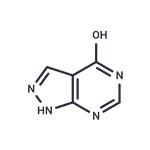
- $65.00 / 10g
- 2025-12-11
- CAS:315-30-0
- Min. Order:
- Purity: 99.36%
- Supply Ability: 10g
- Allopurinol
-
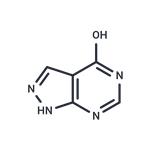
- $65.00 / 10g
- 2025-12-11
- CAS:315-30-0
- Min. Order:
- Purity: 99.36%
- Supply Ability: 10g




